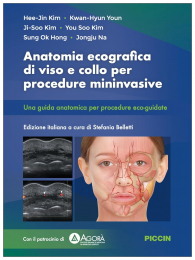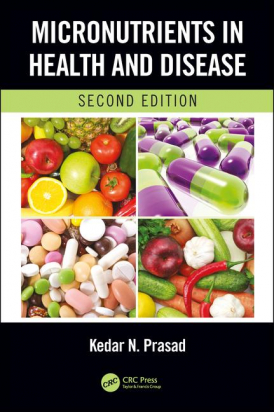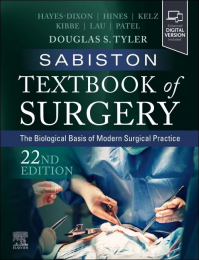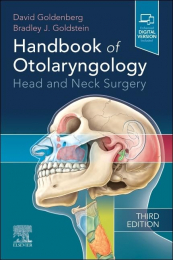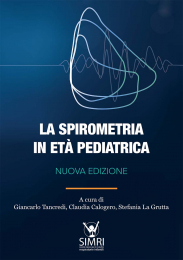Non ci sono recensioni
DA SCONTARE
Book Description
Increased oxidative stress due to the production of excessive amounts of free radicals along with the effects of chronic inflammation plays a major role in the initiation and progression of most chronic diseases. In addition, increased release of glutamate plays a central role in the pathogenesis of various disorders.
This second edition of Micronutrients in Health and Disease proposes a novel concept that in order to simultaneously and optimally reduce oxidative stress, chronic inflammation, and glutamate, it is essential to increase levels of antioxidant enzymes as well as levels of dietary and endogenous antioxidant compounds at the same time. This is accomplished by activating the Nrf2 pathways and by increasing the levels of antioxidant compounds and B-vitamins through supplementation. This book proposes a mixture of micronutrients that achieves this above goal. The mixture of micronutrients together with modification in diet and lifestyle may reduce the risk of chronic diseases and in combination with standard care, may improve the management of these diseases.
KEY FEATURES
• Provides evidence in support of the idea that increased oxidative stress, chronic inflammation, and glutamate are involved in the pathogenesis of chronic diseases.
• Contains three new chapters on Huntington’s disease, Autism spectra, and Prion disease.
• Discusses the role of microRNAs in the pathogenesis of chronic diseases.
• Presents information on regulation of the expression of microRNAs by reactive oxygen species and antioxidants.
Micronutrients in Health and Disease, Second Edition serves as a valuable resource for those seeking to promote healthy aging and prevent and improved management of chronic diseases
Table of Contents
Contents
Preface..........................................................................................................................................xxvii
Acknowledgments .........................................................................................................................xxix
Author ...........................................................................................................................................xxxi
Chapter 1 Basic Facts about Micronutrients .................................................................................1
Introduction ..................................................................................................................1
Evolution of the Antioxidant System ............................................................................1
History of the Discovery of Micronutrients .................................................................1
Sources and Forms of Vitamins ...................................................................................2
Solubility of Micronutrients .........................................................................................4
Distribution of Antioxidants in the Body .....................................................................4
Storage of Antioxidants ................................................................................................6
Can Antioxidants Be Destroyed during Cooking? .......................................................6
Absorption of Antioxidants and Its Significance .........................................................6
Functions of Individual Antioxidants ...........................................................................7
Antioxidant Defense Systems .......................................................................................8
Antioxidant Enzymes ..............................................................................................8
Dietary Antioxidants ...............................................................................................8
Endogenous Antioxidants ........................................................................................8
Known Functions of Antioxidants ...............................................................................8
Current Controversies about Antioxidants ...................................................................9
Misuse of Antioxidants in Clinical Studies .................................................................9
Conclusions ................................................................................................................ 12
References .................................................................................................................. 12
Chapter 2 Basic Facts about Oxidative Stress, Inflammation, and the Immune System ............ 13
Introduction ................................................................................................................ 13
Oxidative Stress .......................................................................................................... 14
What Are Free Radicals? ....................................................................................... 14
Types of Free Radicals .......................................................................................... 14
Formation of Free Radicals Derived from Oxygen and Nitrogen ......................... 14
Oxidation and Reduction Processes ........................................................................... 16
What Is Inflammation? ............................................................................................... 16
Types of Inflammatory Reactions ......................................................................... 17
Products of Inflammatory Reactions .......................................................................... 17
Cytokines ............................................................................................................... 17
Complement Proteins ............................................................................................ 18
Arachidonic Acid (AA) Metabolites ..................................................................... 18
Endothelial/Leukocyte Adhesion Molecules ........................................................ 18
Immune System .......................................................................................................... 18
What Is the Immune System? ..................................................................................... 19
Innate Immunity ......................................................................................................... 19
Adaptive Immunity ....................................................................................................20
Conclusions ................................................................................................................20
References .................................................................................................................. 21
Chapter 3 Scientific Rationale of Current Trends in Clinical Studies of Micronutrients ...........23
Introduction ................................................................................................................23
Levels of Oxidative Stress and Chronic Inflammation in High-Risk Populations ....24
High-Risk Populations of Cancer ..........................................................................24
High-Risk Populations of Coronary Artery Disease (CAD) .................................24
High-Risk Populations of Alzheimer’s Disease (AD) and Parkinson’s
Disease (PD) ..........................................................................................................24
Distributions and Function of Antioxidants ...............................................................25
Results of Clinical Trials with a Single Antioxidant in High-Risk Populations ........26
Cancer ....................................................................................................................26
Coronary Artery Disease (CAD) ...........................................................................26
Alzheimer’s Disease (AD) and Parkinson’s Disease (PD) ....................................27
Why the Use of a Single Antioxidant Produced Inconsistent Results .......................28
Results of Clinical Studies with Multiple Dietary Antioxidants in Cancer ...............29
Results of Clinical Studies with Fat and Fiber ...........................................................30
Rationale for Using a Mixture of Micronutrients for Reducing the Risk and
Progression of Chronic Diseases ................................................................................30
Proposed Mixture of Micronutrients for Reducing the Risk and Progression
of Chronic Diseases.................................................................................................... 31
Proposed Changes in Diet and Lifestyle for Reducing the Risk and Progression
of Chronic Diseases.................................................................................................... 31
Conclusions ................................................................................................................ 32
References .................................................................................................................. 32
Chapter 4 Micronutrients in Healthy Aging and Age-Related Decline in Organ Functions ...... 35
Introduction ................................................................................................................ 35
Trends of Aging Population .......................................................................................36
Evidence for Increased Oxidative Stress During Aging ............................................36
Extracellular Sources for Production of Free Radicals ..............................................36
Cellular Sites of Production of Free Radicals ............................................................ 37
Oxidative Stress-Induced Age-Related Decline in Organelle Functions ...................38
Mitochondrial Dysfunction ...................................................................................38
Impairment of Proteasome and Lysosomal-Mediated Proteolytic Activities ....... 39
Oxidative Stress-Induced Changes in Cell Culture Models .................................. 39
Oxidative Stress-Induced Changes in Animal Models ......................................... 39
Oxidative Stress-Induced Shortening of the Length of Telomere ......................... 39
Evidence for Chronic Inflammation During Aging ...................................................40
Impaired Immune Function in Aging ...................................................................40
Changes in the Antioxidant Defense Systems During Aging .................................... 41
Antioxidant Enzymes ............................................................................................ 41
Changes in Antioxidant Enzymes Activities in Animals ...................................... 42
Changes in Antioxidant Enzymes Activities in Humans ...................................... 42
Changes in Dietary and Endogenous Antioxidants Levels ........................................ 43
Vitamin C .............................................................................................................. 43
Glutathione ............................................................................................................44
Vitamin E ..............................................................................................................44
Coenzyme Q10 ......................................................................................................44
MicroRNAs in Aging ................................................................................................. 45
MicroRNAs ........................................................................................................... 45
MicroRNAs in Age-Related Diseases ................................................................... 45
MicroRNAs and Their Target Proteins in Aged Animals .................................... 45
Oxidative Stress and Pro-inflammatory Cytokine Regulate Expression of
MicroRNAs ........................................................................................................... 47
Antioxidants Regulate Expression of MicroRNAs ............................................... 47
Effects of Individual Antioxidants on Age-Related Functional Deficits ................... 47
Vitamin E .............................................................................................................. 47
Coenzyme Q10 ......................................................................................................48
Carotenoids and Zinc ............................................................................................48
Melatonin ...............................................................................................................48
Flavonoids ..............................................................................................................48
Glutathione and N-Acetylcysteine (NAC) .............................................................48
Alpha-Lipoic Acid .................................................................................................49
Multiple Dietary Antioxidants...............................................................................49
Studies with Individual Antioxidants on Age-Related Neurodegenerative
Diseases in Humans ...................................................................................................49
Regulation of Activation of Nrf2 ...............................................................................50
Reactive Oxygen Species (ROS) Activates Nrf2 ...................................................50
Binding of Nrf2 with ARE in the Nucleus ............................................................50
Existence of ROS-Resistant Nrf2 ..........................................................................50
Antioxidants and Phytochemicals Activate ROS-Resistant Nrf2 ......................... 51
L-Carnitine Activates Nrf2 by a ROS-Dependent Mechanism ............................ 51
Activation of Nrf2 by MicroRNAs ........................................................................ 51
Suppression of Chronic Inflammation ....................................................................... 51
Proposed Mixture of Micronutrients for Healthy Aging and for Reducing
Age-Related Functional Deficits ................................................................................ 51
Proposed Changes in Diet and Lifestyle for Healthy Aging and for Reducing
Age-Related Functional Deficits ................................................................................ 52
Conclusions ................................................................................................................ 52
References .................................................................................................................. 53
Chapter 5 Role of Micronutrients in Prevention of Coronary Artery Disease and
Improvement of the Standard Therapy ......................................................................63
Introduction ................................................................................................................63
Prevalence, Incidence, and Cost .................................................................................64
Evidence for Increased Oxidative Stress in CAD ......................................................64
Consequences of Increased Oxidative Stress ........................................................65
Evidence for Increased Chronic Inflammation in CAD.............................................65
Evidence for Increased Levels of Homocysteine in CAD ..........................................66
MicroRNAs in CAD ..................................................................................................66
MicroRNAs ........................................................................................................... 67
Circulating MicroRNAs in CAD .......................................................................... 67
Cellular MicroRNAs in CAD ................................................................................68
Oxidative Stress and Pro-inflammatory Cytokine Regulate Expression of
MicroRNAs ...........................................................................................................69
Antioxidants Regulate Expression of MicroRNAs ............................................... 70
Role of Antioxidants in CAD ..................................................................................... 70
Animal Studies after Treatment with Antioxidants .............................................. 70
Epidemiologic Studies with Antioxidants ............................................................. 70
Intervention Human Studies after Treatment with Antioxidants .......................... 71
Vitamin E Alone Producing Beneficial Effects .................................................... 74
Vitamin C Alone Producing Beneficial Effects .................................................... 74
Dietary Antioxidants Producing No Effects or Adverse Effects .......................... 74
Endogenous Antioxidants Producing No Effects or Beneficial Effects ................ 76
Dietary and Endogenous Antioxidants with Cholesterol-Lowering Drugs ............... 76
Multiple Dietary Antioxidants with Cholesterol-Lowering Drugs ............................77
Resveratrol and Omega-3 Fatty Acids ........................................................................77
Resveratrol .............................................................................................................77
Omega-3 Fatty Acids ............................................................................................. 78
Intervention Studies with B-Vitamins to Lower Homocysteine Levels ..................... 79
Potential Reasons for the Failure of Individual Micronutrients in Producing
Sustained and Consistent Benefits in CAD ................................................................80
Regulation of Activation of Nrf2 ............................................................................... 81
Reactive Oxygen Species (ROS) Activates Nrf2 ................................................... 81
Binding of Nrf2 with ARE in the Nucleus ............................................................ 81
Existence of ROS-Resistant Nrf2 in CAD ............................................................ 81
Antioxidants and Phytochemicals Activate ROS-Resistant Nrf2 ......................... 81
L-Carnitine Activates Nrf2 by a ROS-Dependent Mechanism ............................ 81
Activation of Nrf2 by MicroRNAs ........................................................................82
Suppression of Chronic Inflammation .......................................................................82
Proposed Mixture of Micronutrients for Prevention and Improved
Management of CAD .................................................................................................82
Proposed Changes in Diet and Lifestyle for Prevention and Improved
Management of CAD .................................................................................................82
Prevention and Improved Management of CAD ........................................................83
Primary Prevention ................................................................................................83
Secondary Prevention ............................................................................................83
Improved Management of CAD ............................................................................84
Conclusions ................................................................................................................84
References ..................................................................................................................84
Chapter 6 Micronutrients in Prevention and Improvement of the Standard Therapy in
Diabetes ......................................................................................................................95
Introduction ................................................................................................................95
Incidence, Prevalence, and Cost .................................................................................96
Incidence ................................................................................................................96
Prevalence ..............................................................................................................96
Cost ........................................................................................................................96
Types of Diabetes .......................................................................................................96
Type 1 Diabetes .....................................................................................................96
Type 2 Diabetes .....................................................................................................96
Gestational Diabetes ..............................................................................................97
Other Types of Diabetes ........................................................................................97
Pre-diabetes and Metabolic Syndrome .................................................................97
Complications of Diabetes .........................................................................................97
Evidence for Increased Oxidative Stress in Diabetes.................................................97
Type 1 Diabetes .....................................................................................................97
Type 2 Diabetes .....................................................................................................98
Metabolic Syndrome .............................................................................................99
Evidence for Increased Chronic Inflammation in Diabetes .......................................99
MicroRNAs in Diabetes ........................................................................................... 100
MicroRNAs ......................................................................................................... 100
Circulating MicroRNAs in Diabetes ................................................................... 100
Cellular MicroRNAs in Diabetes (Humans) ....................................................... 102
Cellular MicroRNAs in Diabetes (Animal Models)............................................ 103
Oxidative Stress and Pro-inflammatory Cytokines Regulate Expression
of MicroRNAs ..................................................................................................... 103
Antioxidants Regulate Expression of MicroRNAs ............................................. 103
Reducing Oxidative Stress and Chronic Inflammation in Diabetes ........................ 104
Role of Antioxidants and Phytochemicals in Protecting Against Diabetes ............. 104
Vitamin A (Animal and Human Studies) ............................................................ 104
Vitamin C (Human Studies) ................................................................................ 104
Vitamin C (Animal Studies) ................................................................................ 105
Vitamin D3 (Animal Studies) .............................................................................. 105
Vitamin E (Animal Studies) ................................................................................ 105
Vitamin E (Human Studies) ................................................................................ 106
Alpha-Lipoic Acid (Human Studies) ................................................................... 106
Alpha-Lipoic Acid (Animal Studies) ................................................................... 106
N-Acetylcysteine (Human Studies) ..................................................................... 107
N-Acetylcysteine (Animal Studies) ..................................................................... 107
L-Carnitine (Human Studies) .............................................................................. 107
L-Carnitine (Animal Studies) .............................................................................. 108
Coenzyme Q10 (Human Studies) ........................................................................ 108
Coenzyme Q10 (Animal Studies) ........................................................................ 109
Omega-3 Fatty Acids (Animal Studies) ............................................................... 109
Omega-3-Fatty Acids (Epidemiologic Studies) ................................................... 110
Omega-3-Fatty Acids (Intervention Studies) ....................................................... 110
Antioxidant Mixtures (Human Studies) .............................................................. 110
Antioxidant Mixture (Animal Studies) ............................................................... 111
Folic Acid and Thiamine (Human Studies) ......................................................... 111
Folic Acid and Thiamine (Animal Studies) ........................................................ 112
Chromium (Human Studies) ............................................................................... 112
Antioxidants with Diabetic/Cardiovascular Drugs and/or Insulin (Human
Studies) ................................................................................................................ 112
Antioxidants with Diabetic/Cardiovascular Drugs and/or Insulin (Animal
Studies) ................................................................................................................ 113
Treatments of Diabetes ............................................................................................. 113
Standard Treatments ............................................................................................ 113
Aspirin (Human Studies) ..................................................................................... 113
Aspirin Resistance ............................................................................................... 114
Aspirin (Animal Studies)..................................................................................... 114
Potential Reasons for Inconsistent Results with Individual Micronutrients or
Aspirin ...................................................................................................................... 114
Regulation of Activation of Nrf2 ............................................................................. 115
Reactive Oxygen Species (ROS) Activates Nrf2 ................................................. 115
Binding of Nrf2 with ARE in the Nucleus .......................................................... 115
Existence of ROS-Resistant Nrf2 in Diabetes ..................................................... 116
Antioxidants and Phytochemicals Activate ROS-Resistant Nrf2 ....................... 116
L-Carnitine Activates Nrf2 by a ROS-Dependent Mechanism .......................... 116
Activation of Nrf2 by MicroRNAs ...................................................................... 116
Suppression of Chronic Inflammation ..................................................................... 116
Recommended Mixture of Micronutrients for the Prevention of Diabetes ............. 117
Recommended Changes in Diet and Lifestyle for the Prevention and
Improved Management of Diabetes ......................................................................... 117
Prevention of Diabetes ............................................................................................. 117
Primary Prevention .............................................................................................. 117
Secondary Prevention .......................................................................................... 118
Improved Management of Diabetes .................................................................... 118
Conclusions .............................................................................................................. 118
References ................................................................................................................ 118
Chapter 7 Micronutrients in Cancer Prevention ....................................................................... 131
Introduction .............................................................................................................. 131
Incidence, Prevalence, Mortality, and Cost .............................................................. 132
Proposed Stages of Carcinogenesis .......................................................................... 132
Two-Stage Model of Animal Carcinogenesis ...................................................... 132
Some Examples of Tumor Initiators and Tumor Promoters ..................................... 133
Three-Stage Model of Human Carcinogenesis ................................................... 133
Diagrammatic Representation of Three-Stage Model of Human Carcinogenesis ........133
Some Examples of Environmental-Related Carcinogens ........................................ 134
Some Examples of Diet-Related Carcinogens ......................................................... 134
Some Examples of Diet-Related Cancer Protective Agents ..................................... 135
Some Examples of Lifestyle-Related Carcinogens .................................................. 135
Alcohol ................................................................................................................ 135
Cell Phone ........................................................................................................... 135
Smoking ............................................................................................................... 136
Coffee and Caffeine ............................................................................................. 136
Evidence for Increased Oxidative Stress .................................................................. 137
Evidence for Increased Chronic Inflammation ........................................................ 137
MicroRNAs in Cancer Prevention ........................................................................... 138
MicroRNAs ......................................................................................................... 138
Changes in MicroRNAs after Exposure to Chemical Carcinogens and
Oncogenic Virus ....................................................................................................... 138
Functions of Antioxidants Relevant to Cancer Prevention ...................................... 140
Antioxidants and Phytochemicals Regulate Expression of MicroRNAs ................. 141
Reducing Oxidative Stress and Chronic Inflammation in Cancer Prevention ......... 141
Cell Culture Models ............................................................................................ 141
Animal Models .................................................................................................... 141
Epidemiologic Studies ......................................................................................... 142
Intervention Studies with Single Antioxidants (Lung Cancer) ........................... 143
Intervention Studies with a Single Antioxidant (Other Cancers) ........................ 144
Intervention Studies with Multiple Dietary Antioxidants ................................... 144
Intervention Studies with Vitamin D and Calcium ............................................. 145
Intervention Studies with Folate and B-Vitamins ............................................... 145
Intervention Studies with Fat and Fiber .............................................................. 146
Intervention Studies with Non-Steroidal Anti-Inflammatory Drugs (NSAIDs) ........146
Potential Reasons for Inconsistent Results with Individual Micronutrients
or Aspirin in Cancer Prevention Studies .................................................................. 146
Regulation of Activation of Nrf2 ............................................................................. 147
Reactive Oxygen Species (ROS) Activates Nrf2 ................................................. 147
Binding of Nrf2 with ARE in the Nucleus .......................................................... 147
Existence of ROS-Resistant Nrf2 in Cells Following Exposure to Carcinogens .......147
Antioxidants and Phytochemicals Activate ROS-Resistant Nrf2 ....................... 148
L-Carnitine Activates Nrf2 by a ROS-Dependent Mechanism .......................... 148
Activation of Nrf2 by MicroRNAs ...................................................................... 148
Suppression of Chronic Inflammation ..................................................................... 149
Recommended Mixture of Micronutrients for the Prevention of Cancer ................ 149
Recommended Changes in Diet and Lifestyle for the Prevention of Cancer ........... 149
Proposed Cancer Prevention Strategies ................................................................... 150
Primary Prevention .............................................................................................. 150
Secondary Prevention .......................................................................................... 150
Can Cancer with a Family History Be Prevented? .................................................. 150
Problems Associated with Implementation of Dietary and Lifestyle
Recommendations .................................................................................................... 150
Toxicity of Micronutrients ........................................................................................ 151
Conclusions .............................................................................................................. 151
References ................................................................................................................ 152
Chapter 8 Micronutrients in Improvement of the Standard Therapy in Cancer ....................... 163
Introduction .............................................................................................................. 163
MicroRNAs in Cancer Cells .................................................................................... 164
MicroRNAs ......................................................................................................... 164
MicroRNAs Acting as Tumor Suppressors or Anti-oncogenes ............................... 165
Colon Cancer ....................................................................................................... 165
Gastric Cancer Cells ............................................................................................ 165
Non-Small Cell Lung Cancer (NSCLC) ............................................................. 165
Retinoblastoma .................................................................................................... 166
Breast Cancer Cells ............................................................................................. 166
Hepatocellular Carcinoma ................................................................................... 167
Bladder Cancer .................................................................................................... 167
Cervical Cancer ................................................................................................... 167
MicroRNAs Acting as Oncogenes ........................................................................... 168
Bladder Cancer .................................................................................................... 168
Lung Cancer ........................................................................................................ 168
Non-Small-Cell Lung Cancer .............................................................................. 168
Prostate Cancer, Gastric Cancer, and Esophageal Cancer .................................. 168
Cervical Cancer, Colorectal Cancer, and Breast Cancer ..................................... 168
Nrf2 in Cancer Cells ................................................................................................ 169
Normal Cell Response to Activated Nrf2............................................................ 169
High Expression of Nrf2 Promotes Cancer Growth and Drug-Resistant ................ 169
Individual Antioxidants Inhibit Cancer Growth in the Presence of Elevated
Levels of Nrf2 .......................................................................................................... 170
Luteolin ............................................................................................................... 170
Pterostilbene ........................................................................................................ 170
Antioxidants Activate ROS-Resistant Nrf2 ......................................................... 170
Synthetic Triterpenoid RTA 405 ......................................................................... 171
Curcumin ............................................................................................................. 171
Tert-Butylhydroquinone ...................................................................................... 171
Vitamin E Succinate ............................................................................................ 171
Vitamin C ............................................................................................................ 172
Vitamin A and Carotenoids ................................................................................. 173
Selenium .............................................................................................................. 173
N-Acetylcysteine (NAC) and Alpha-Lipoic Acid................................................ 173
Antioxidant-Induced Changes in Gene Expression Profiles in Cancer Cells .......... 173
Effects of Therapeutic Doses of Individual Antioxidants in Combination
with Radiation Therapy on Cancer Cells and Normal Cells .................................... 174
Cell Culture Studies ............................................................................................ 174
Animal Studies .................................................................................................... 174
Human Studies .................................................................................................... 176
Effects of Therapeutic Doses of Individual Antioxidants in Combination
with Chemotherapeutic on Cancer Cells and Normal Cells .................................... 176
Cell Culture Studies ............................................................................................ 176
Animal Studies .................................................................................................... 179
Human Studies .................................................................................................... 179
Reasons for Growth-Inhibitory Effects Antioxidants in the Presence of
Elevated Levels of Nrf2 ............................................................................................ 179
Preventive Doses of Individual Antioxidants Reduce the Efficacy of
Therapeutic Agents .................................................................................................. 180
Effects of Therapeutic Doses of Individual Antioxidants in Combination with
Experimental Therapies on Cancer Cells ................................................................. 180
Hyperthermia....................................................................................................... 180
Sodium Butyrate and Interferon-Alpha2b ........................................................... 181
Immunotherapy and Gene Therapy ..................................................................... 182
Proposed Mixture Therapeutic Doses of Antioxidants During Cancer Therapy ......182
Conclusions .............................................................................................................. 182
References ................................................................................................................ 183
Chapter 9 Micronutrients in the Prevention and Improvement of the Standard Therapy for
Alzheimer’s Disease ................................................................................................. 191
Introduction .............................................................................................................. 191
Prevalence, Incidence, and Cost of AD .................................................................... 192
Estimated Cost of Treatment of AD ......................................................................... 193
Etiology of AD ......................................................................................................... 193
Neuropathology of AD ............................................................................................. 193
MicroRNAs in the Pathogenesis of AD ................................................................... 193
MicroRNAs ......................................................................................................... 193
Changes in the Expressions of MicroRNAs in Human AD ..................................... 194
Elevated Expressions of MicroRNAs .................................................................. 194
Decreased Expressions of MicroRNAs ............................................................... 195
Changes in MicroRNAs in Animal and Cell Culture AD Models .......................... 196
Elevated Expressions of MicroRNAs .................................................................. 196
Decreased Expression of MicroRNAs ................................................................ 196
ROS and Pro-inflammatory Cytokines Regulate the Expressions of MicroRNAs ......197
ROS Upregulates the Expressions of MicroRNAs Causing Neurodegeneration .......197
ROS Downregulates the Expressions of MicroRNAs Causing
Neurodegeneration............................................................................................... 198
Pro-inflammatory Cytokines Upregulate the Expressions of MicroRNAs
Causing Neurodegeneration ................................................................................ 198
Micronutrients Regulate the Expressions of MicroRNAs ....................................... 199
Resveratrol Enhances the Expressions of MicroRNAs ....................................... 199
Resveratrol Decreases the Expressions of MicroRNAs ...................................... 199
Isoflavone Increases the Expressions of MicroRNAs ......................................... 199
Genistein Decreases the Expressions of MicroRNAs .........................................200
Quercetin Enhances the Expressions of MicroRNAs .........................................200
Curcumin Decreases the Expressions of MicroRNAs ........................................200
Curcumin Enhances the Expressions of MicroRNAs .........................................200
Coenzyme Q10 Regulates the Expressions of MicroRNAs ................................200
Vitamin D3 Regulates the Expressions of MicroRNAs ......................................200
Nicotinamide (Vitamin-B3) Regulates the Expressions of MicroRNAs ............ 201
Selenium Regulates the Expressions of MicroRNAs .......................................... 201
Vitamin E and Delta-Tocotrienol Regulate the Expressions of MicroRNAs ...... 201
Vitamin A (Retinoic Acid) Regulates the Expressions of MicroRNAs .............. 201
Vitamin C Regulates the Expression of a MicroRNA ........................................202
Sources of Free Radicals in the Normal Brain ........................................................203
Evidence for Increased Oxidative Stress as an Early Event in the Initiation of AD ......203
Studies on Cell Culture Model of AD .................................................................203
Studies on Animal Models of AD .......................................................................204
Studies on Asymptomatic Individuals Carrying Mutated AD Specific Genes ........204
Studies on Increased Oxidative Stress in an Early Phase of AD ........................204
Studies on Increased Oxidative Stress in Established Human AD
(Autopsied Brain Tissue) ..........................................................................................205
Studies on Increased Oxidative Stress in Established Human AD
(Peripheral Tissue) ....................................................................................................205
Mitochondrial Dysfunction ......................................................................................206
Processes of Generating Beta-Amyloid Fragments (Aβ1-42) and Their Toxicity .........206
Oxidative Stress Increases Production of Beta Amyloids (Aβ1-42 Peptides) ..........206
Aβ1-42 Peptides Cause Neuronal Degeneration by Inducing Free Radicals ...........207
Mutations in AD Specific Genes Increases the Production of Beta-Amyloids ........207
Oxidative Stress Increases Hyperphosphorylated Tau (P-Tau) Protein in AD ........207
Oxidative Stress Inhibits Proteasome Activity in AD .............................................207
Evidence for Increased Levels of Markers of Chronic Inflammation in AD ...........208
Cholesterol-Induced Generation of Beta-Amyloids .................................................209
Genetic Defects in Idiopathic AD ............................................................................209
Mutated AD Genes Induce Neurodegeneration by Producing of Beta-Amyloids ... 210
Neuroglobin in AD ................................................................................................... 211
Laboratory and Clinical Studies with Individual Micronutrients in AD ................. 211
Alpha-Lipoic Acid ............................................................................................... 211
Coenzyme Q10 .................................................................................................... 212
Melatonin ............................................................................................................. 212
Nicotinamide (Vitamin B3) ................................................................................. 212
Vitamin A, Vitamin E, and Vitamin C ............................................................... 212
Serum Levels of Antioxidants ............................................................................. 213
B-Vitamins ........................................................................................................... 213
Curcumin ............................................................................................................. 214
Resveratrol ........................................................................................................... 214
Ginkgo biloba and Omega-3 Fatty Acids ............................................................ 214
Green Tea Epigallocatechin-3-Gallate (EGCG) and Caffeine ............................ 214
Non-Steroidal Anti-Inflammatory Drugs (NSAIDs) in AD .................................... 215
Potential Reasons for Inconsistent Results with Individual Micronutrients
or Aspirin in AD ...................................................................................................... 215
Activation of Nrf2 (Nuclear Factor-Erythroid-2-Related Factor 2) ......................... 216
Nrf2 ..................................................................................................................... 216
ROS Activates Nrf2 ............................................................................................. 216
ROS-Resistant Nrf2 ............................................................................................. 216
Antioxidants Activate ROS-Resistant Nrf2 ......................................................... 216
Binding of Nrf2 with ARE in the Nucleus ............................................................... 216
Suppression of Chronic Inflammation ..................................................................... 216
Nrf2 in AD .......................................................................................................... 216
Proposed Micronutrient Mixture for Optimally Reducing Oxidative Stress
and Chronic Inflammation in AD ............................................................................ 217
Proposed Micronutrient Strategies for Prevention of AD ........................................ 217
Primary Prevention for AD ................................................................................. 217
Can AD Symptoms Be Prevented or Delayed in Individuals Carrying Mutated
Gene? ........................................................................................................................ 218
Secondary Prevention for AD ............................................................................. 218
Proposed Micronutrient Mixture for Improving the Management of AD ............... 218
Current Drug Therapy for AD............................................................................. 218
Proposed Micronutrient Mixture in Combination with Drug Therapy for AD .........219
Diet and Lifestyle Recommendations for AD .......................................................... 219
Conclusions .............................................................................................................. 219
References ................................................................................................................220
Chapter 10 Micronutrients for the Prevention and Improvement of the Standard Therapy
for Parkinson’s Disease ............................................................................................ 235
Introduction .............................................................................................................. 235
Incidence, Prevalence, and Cost of PD ....................................................................236
Etiology of PD ..........................................................................................................236
Neuropathology and Symptoms of PD ..................................................................... 237
Genetic of PD ........................................................................................................... 237
PD Genes and Oxidative Stress ................................................................................238
DJ-1 Gene ............................................................................................................238
Alpha-Synuclein Gene ......................................................................................... 238
PTEN-Induced Putative Kinase 1 (PINK1) ........................................................ 239
PARKIN Gene .....................................................................................................240
MicroRNAs in the Pathogenesis of PD ....................................................................240
MicroRNAs .........................................................................................................240
Changes in the Expressions of MicroRNAs in Neuronal Cell Culture
Models of PD .........................................................................................................240
1-Methyl-4-Phenylpyridinium (MPP+) Treatment..............................................240
6-Hydroxydopamine (6-OHDA) Treatment ........................................................ 241
Rotenone Treatment ............................................................................................. 241
Changes in the Expressions of MicroRNAs in Animal Models of PD .................... 241
Changes in the Expressions of MicroRNAs in Human PD .....................................242
Changes in the Expressions of MicroRNAs in Impaired Non-motor
Symptoms in PD ....................................................................................................... 243
Reactive Oxygen Species (ROS) Regulates the Expressions of MicroRNAs in
Neuronal Cells .......................................................................................................... 243
Pro-inflammatory Cytokines Upregulate the Expressions of MicroRNAs ............. 243
Antioxidants Regulate the Expressions of MicroRNAs ........................................... 243
Evidence for Increased Oxidative Stress in PD........................................................ 243
Mitochondrial Dysfunction in PD ............................................................................244
Evidence for Increased Chronic Inflammation in PD ..............................................245
Evidence for Increased Glutamate in PD .................................................................245
Laboratory and Human Studies in PD after Treatment with Micronutrients ..........246
In Vitro Studies with Micronutrients...................................................................246
Cell Culture Studies with Micronutrients ...........................................................246
Antioxidant Studies in Animal Models of PD ....................................................246
Antioxidant Studies in Human PD ........................................................................... 247
Potential Reasons for Inconsistent Results with Individual Micronutrients in
AD Prevention Studies .............................................................................................248
Activation of Nrf2 (Nuclear Factor-Erythroid-2-Related Factor 2) .........................249
Nrf2 .....................................................................................................................249
ROS Activates Nrf2 ..................................................................................................249
Nrf2 in PD ................................................................................................................250
Reducing Glutamate Release and Toxicity ...............................................................250
Proposed Micronutrient Mixture for Prevention and Improved
Management of PD ...................................................................................................250
Primary Prevention .............................................................................................. 251
Secondary Prevention .......................................................................................... 251
Current Treatments of PD ........................................................................................ 251
Proposed Micronutrient Mixture in Combination wi
Ultimi prodotti
